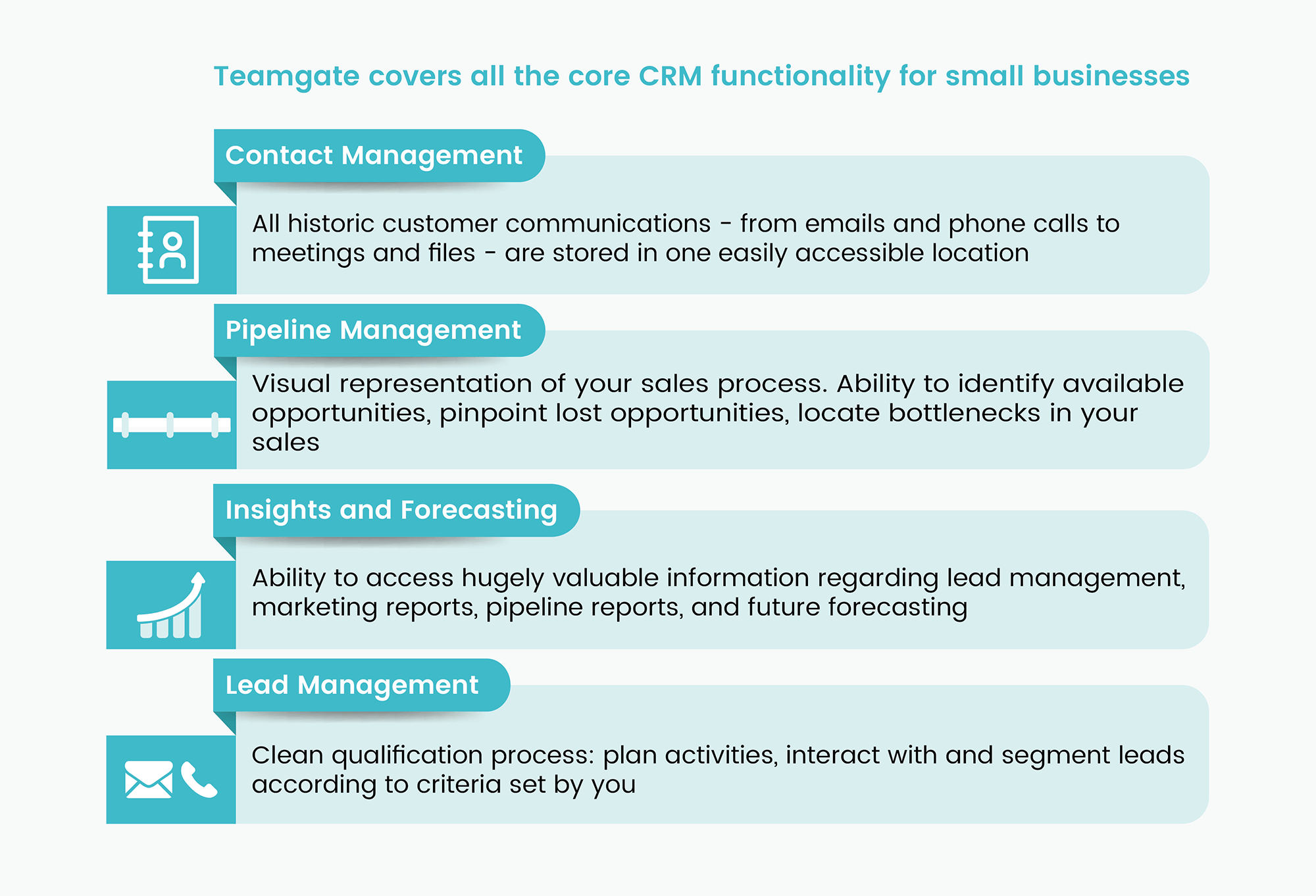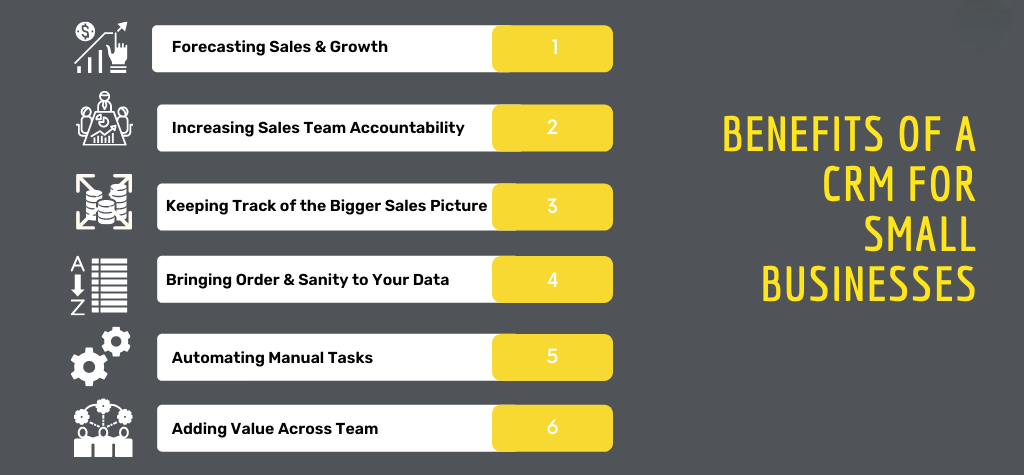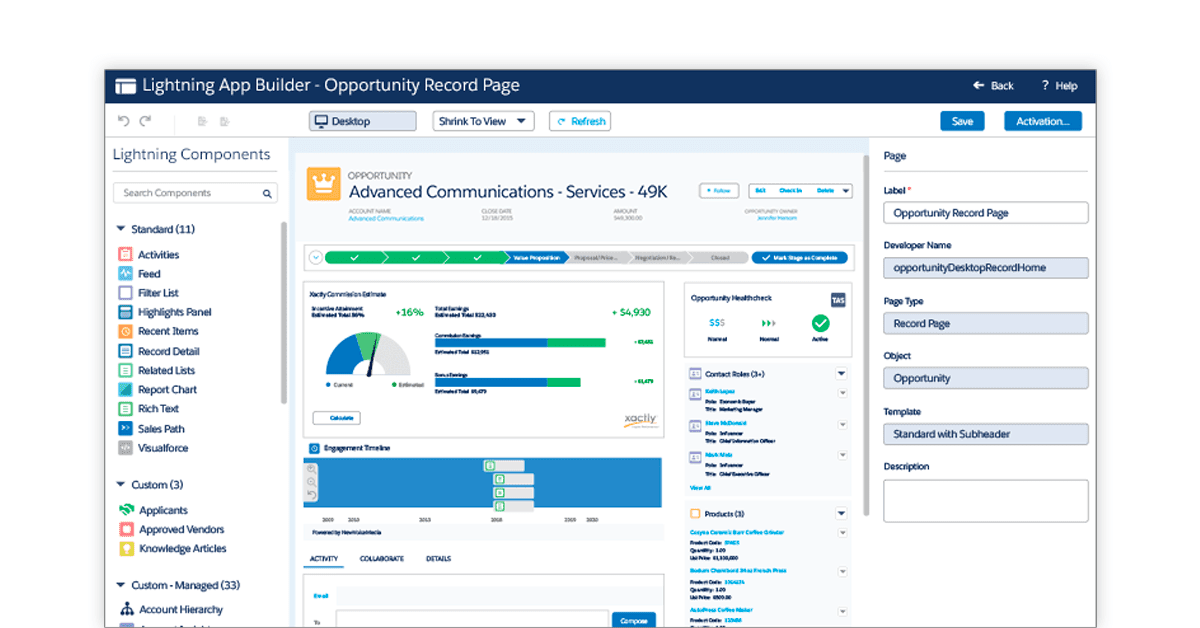
The Small Business CRM Checklist: Your Guide to Customer Relationship Management Success
Starting a small business is an exciting journey, filled with challenges and rewards. One of the most crucial aspects of running a successful small business is building and nurturing strong customer relationships. That’s where a Customer Relationship Management (CRM) system comes in. A CRM isn’t just a piece of software; it’s the backbone of your customer-centric strategy. It helps you understand your customers, track interactions, and personalize your communications, ultimately leading to increased sales and customer loyalty. But with so many CRM options available, how do you choose the right one? And once you’ve chosen, how do you ensure a smooth implementation? This comprehensive checklist will guide you through every step, from assessing your needs to maximizing the value of your CRM.
I. Understanding Your Needs: The Foundation of CRM Success
Before diving into CRM solutions, it’s essential to understand your business needs. This involves a thorough assessment of your current processes, customer interactions, and goals. Skipping this step is like building a house without a blueprint; you might end up with something, but it probably won’t meet your needs.
1. Identify Your Business Goals
What are your primary objectives? Are you aiming to increase sales, improve customer retention, streamline marketing efforts, or enhance customer service? Define your goals clearly and quantify them whenever possible. For example, instead of saying “increase sales,” aim for “increase sales by 15% within the next year.” This specificity will guide your CRM selection and implementation.
- Sales Growth: Increase revenue by acquiring new customers and upselling to existing ones.
- Customer Retention: Reduce churn and foster customer loyalty.
- Marketing Automation: Streamline marketing campaigns and improve lead generation.
- Improved Customer Service: Provide faster and more efficient support.
2. Analyze Your Current Customer Interactions
How do you currently interact with your customers? Do you use spreadsheets, email, or other tools to manage customer data? Map out your customer journey, from initial contact to post-sale support. Identify pain points and areas where automation or improved organization could benefit your business. Understanding your existing processes will help you identify the features you need in a CRM.
- Lead Generation: How do you capture leads (website forms, trade shows, etc.)?
- Sales Process: What steps do you take to convert leads into customers?
- Customer Service: How do you handle customer inquiries and support requests?
3. Assess Your Data and Reporting Needs
What data do you need to track to measure your progress toward your goals? Do you need reports on sales performance, marketing campaign effectiveness, or customer satisfaction? Identify the key metrics that are important to your business and ensure that your CRM can track and report on them. Consider the types of reports you need, such as sales dashboards, marketing analytics, and customer service reports.
- Sales Metrics: Revenue, conversion rates, average deal size.
- Marketing Metrics: Lead generation, website traffic, campaign performance.
- Customer Service Metrics: Response times, resolution rates, customer satisfaction scores.
4. Evaluate Your Budget and Resources
How much are you willing to spend on a CRM? Consider not only the software cost but also the cost of implementation, training, and ongoing maintenance. Determine how much time and effort you can dedicate to implementing and managing the CRM. Identify any internal expertise or the need to hire external consultants. A realistic budget and resource allocation are critical for successful CRM adoption.
- Software Costs: Subscription fees, one-time setup fees.
- Implementation Costs: Data migration, customization, training.
- Ongoing Costs: Maintenance, support, upgrades.
II. Choosing the Right CRM: Finding the Perfect Fit
Once you’ve assessed your needs, it’s time to explore the CRM options available. There’s a vast landscape of CRMs, each with its strengths and weaknesses. The key is to find the one that aligns with your specific needs and budget. Don’t be swayed by flashy features; focus on the functionality that will truly benefit your business.
1. Research CRM Providers
Start by researching different CRM providers. Look at industry reviews, customer testimonials, and case studies. Create a shortlist of potential candidates based on their features, pricing, and reputation. Consider both established players and newer, more specialized solutions.
- Popular CRMs: Salesforce, HubSpot, Zoho CRM, Pipedrive, Freshsales.
- Industry-Specific CRMs: CRMs tailored for real estate, healthcare, or other industries.
- Open-Source CRMs: SugarCRM, SuiteCRM (offer more customization options).
2. Evaluate Key Features
Focus on the features that are most important to your business. Not all CRM systems offer the same capabilities. Consider the following features when evaluating your options:
- Contact Management: Ability to store and manage customer contact information.
- Lead Management: Features for capturing, tracking, and nurturing leads.
- Sales Automation: Tools for automating sales tasks, such as email follow-ups.
- Marketing Automation: Features for creating and managing marketing campaigns.
- Customer Service: Tools for managing customer inquiries and support requests.
- Reporting and Analytics: Ability to generate reports and track key metrics.
- Integration: Compatibility with other business tools (e.g., email, accounting software).
- Mobile Access: Ability to access the CRM from mobile devices.
3. Consider Scalability and Flexibility
Choose a CRM that can grow with your business. Consider whether the system can accommodate your future needs, such as increased data volume or new features. Look for a CRM that offers customization options and the ability to integrate with other tools. Flexibility is key to ensuring your CRM remains a valuable asset as your business evolves.
- Scalability: Can the CRM handle more users, data, and transactions?
- Customization: Can you customize the CRM to fit your specific needs?
- Integrations: Does the CRM integrate with your existing tools?
4. Prioritize User-Friendliness
A CRM is only effective if your team actually uses it. Choose a system that is easy to learn and use. Look for a clean interface, intuitive navigation, and helpful documentation. Consider offering training to your team to ensure they understand how to use the CRM effectively. User adoption is crucial for the success of any CRM implementation.
- Interface: Is the system easy to navigate?
- Training: Does the provider offer training and support?
- Documentation: Are there helpful guides and tutorials?
5. Compare Pricing and Plans
CRM pricing varies widely. Carefully compare the pricing plans offered by different providers. Consider the features included in each plan and choose the one that best fits your budget and needs. Be aware of any hidden costs, such as setup fees or data storage charges. Consider the long-term cost of ownership, including ongoing maintenance and support.
- Pricing Models: Per-user, tiered pricing, or feature-based pricing.
- Free Trials: Take advantage of free trials to test out the CRM.
- Long-Term Costs: Consider the ongoing costs of support and maintenance.
III. Implementing Your CRM: Making the Transition Smooth
Implementing a CRM is a significant undertaking. Careful planning and execution are essential to ensure a smooth transition and maximize the benefits of your new system. Don’t underestimate the time and effort required for implementation.
1. Plan Your Implementation Strategy
Create a detailed implementation plan. Define the scope of the project, set timelines, and assign responsibilities. Identify the key steps involved, such as data migration, system configuration, and user training. A well-defined plan will help you stay on track and avoid costly mistakes.
- Project Scope: Define the features and functionality you’ll implement initially.
- Timeline: Set realistic deadlines for each phase of the implementation.
- Responsibilities: Assign roles and responsibilities to team members.
2. Migrate Your Data
Data migration is a critical step. Plan how you will transfer your existing customer data into the new CRM. Clean and organize your data before migrating it to ensure accuracy. Test the data migration process to identify and resolve any issues. Data quality is paramount for the effectiveness of your CRM.
- Data Cleaning: Remove duplicates and correct errors in your data.
- Data Mapping: Map your existing data fields to the corresponding fields in the CRM.
- Testing: Test the data migration process to ensure accuracy.
3. Configure Your CRM
Customize the CRM to fit your specific needs. Configure the system to match your business processes, sales stages, and reporting requirements. Set up user roles and permissions to control access to data. This customization ensures the CRM works the way you do.
- Custom Fields: Add custom fields to store specific data relevant to your business.
- Workflows: Automate tasks, such as sending email follow-ups.
- User Roles: Set up user roles and permissions to control access to data.
4. Train Your Team
Provide comprehensive training to your team. Train them on how to use the CRM effectively and how to enter and manage data. Offer ongoing support and resources to help them adopt the new system. Well-trained users are essential for maximizing the value of your CRM.
- Training Materials: Provide training manuals, videos, and other resources.
- Hands-on Training: Offer hands-on training sessions to practice using the system.
- Ongoing Support: Provide ongoing support and answer questions.
5. Test and Refine
Test the CRM thoroughly before going live. Identify and resolve any issues. Gather feedback from your team and make adjustments as needed. Continuous improvement is key to optimizing your CRM implementation.
- User Acceptance Testing (UAT): Have users test the system and provide feedback.
- Bug Fixes: Resolve any bugs or issues identified during testing.
- Refinement: Make adjustments based on feedback and testing results.
IV. Maximizing Your CRM: Getting the Most Out of Your Investment
Once your CRM is implemented, the work isn’t over. Continuous monitoring, optimization, and adaptation are essential to maximize the value of your investment. A CRM is a living system that should evolve with your business.
1. Monitor and Analyze Your Data
Regularly monitor your CRM data to track your progress toward your goals. Analyze your sales performance, marketing campaign effectiveness, and customer satisfaction. Identify trends and insights that can help you make informed decisions. Data-driven decision-making is the key to CRM success.
- Sales Reports: Track sales performance, conversion rates, and revenue.
- Marketing Reports: Analyze lead generation, website traffic, and campaign performance.
- Customer Service Reports: Monitor response times, resolution rates, and customer satisfaction.
2. Optimize Your Processes
Identify opportunities to optimize your sales, marketing, and customer service processes. Streamline workflows and automate tasks to improve efficiency. Continuously look for ways to improve your processes and make the most of your CRM’s capabilities.
- Sales Process Optimization: Identify bottlenecks in your sales process and streamline them.
- Marketing Automation: Automate marketing tasks, such as email campaigns.
- Customer Service Improvements: Improve customer service response times and resolution rates.
3. Integrate with Other Tools
Integrate your CRM with other business tools, such as email marketing platforms, accounting software, and social media platforms. Integrations can streamline your workflows and provide a more complete view of your customer data. The more integrated your system, the more efficient your operations will be.
- Email Marketing Integration: Integrate with your email marketing platform to automate email campaigns.
- Accounting Software Integration: Integrate with your accounting software to track sales and revenue.
- Social Media Integration: Integrate with your social media platforms to manage social media interactions.
4. Stay Updated and Adapt
CRM technology is constantly evolving. Stay up-to-date on the latest features and best practices. Adapt your CRM strategy as your business needs change. Embrace new features and tools to maximize the value of your CRM. The CRM world is dynamic; staying current is vital.
- New Features: Stay informed about new CRM features and capabilities.
- Best Practices: Follow best practices for CRM usage.
- Adaptation: Adapt your CRM strategy as your business needs change.
5. Seek Ongoing Training and Support
Invest in ongoing training and support. Stay up-to-date on best practices and learn new features. Take advantage of the resources offered by your CRM provider. Continuous learning is key to maximizing the value of your CRM and ensuring its long-term success. Don’t hesitate to seek help; it’s a valuable investment.
- Training Courses: Take advantage of training courses offered by your CRM provider.
- Online Resources: Utilize online resources, such as tutorials and webinars.
- Customer Support: Contact customer support for assistance.
V. Common CRM Challenges and How to Overcome Them
Even with careful planning, challenges can arise during CRM implementation and usage. Being aware of these common challenges and having strategies to overcome them can help you avoid pitfalls and ensure success.
1. Lack of User Adoption
One of the most common challenges is a lack of user adoption. If your team doesn’t use the CRM, it won’t be effective. To overcome this, provide adequate training, emphasize the benefits of using the CRM, and make it easy to use. Get user buy-in from the start.
- Provide Training: Offer comprehensive training on how to use the CRM.
- Highlight Benefits: Emphasize the benefits of using the CRM, such as increased efficiency and improved customer relationships.
- Make it Easy to Use: Choose a user-friendly CRM and provide ongoing support.
2. Data Quality Issues
Poor data quality can undermine the effectiveness of your CRM. Clean and accurate data is essential for generating meaningful reports and making informed decisions. Implement data validation rules and regularly clean your data to ensure its accuracy. Garbage in, garbage out, as they say.
- Data Validation: Implement data validation rules to prevent errors.
- Data Cleaning: Regularly clean your data to remove duplicates and correct errors.
- Data Governance: Establish data governance policies to ensure data quality.
3. Integration Problems
Integrating your CRM with other business tools can be complex. Choose a CRM that integrates seamlessly with your existing tools. If you encounter integration problems, seek help from your CRM provider or a qualified consultant. Proper integration is a key to a unified system.
- Choose a Compatible CRM: Choose a CRM that integrates seamlessly with your existing tools.
- Test Integrations: Test integrations thoroughly to ensure they work correctly.
- Seek Professional Help: If you encounter problems, seek help from your CRM provider or a qualified consultant.
4. Lack of Customization
If your CRM isn’t customized to fit your specific needs, it may not be as effective as it could be. Customize the CRM to match your business processes, sales stages, and reporting requirements. Don’t be afraid to tailor the system to your specific needs.
- Custom Fields: Add custom fields to store specific data relevant to your business.
- Workflows: Automate tasks, such as sending email follow-ups.
- Reporting: Customize reports to track the metrics that are important to your business.
5. Poor Planning and Implementation
A lack of planning and poor implementation can lead to CRM failure. Create a detailed implementation plan, set realistic timelines, and assign responsibilities. Don’t rush the process. Planning is paramount.
- Detailed Plan: Create a detailed implementation plan.
- Realistic Timelines: Set realistic deadlines for each phase of the implementation.
- Assign Responsibilities: Assign roles and responsibilities to team members.
VI. Conclusion: Embracing the Power of CRM for Small Business Success
Implementing a CRM is a significant investment that can revolutionize your small business. By following this checklist, you can choose the right CRM, implement it successfully, and maximize its value. Remember, a CRM is not just a tool; it’s a strategic asset that can help you build stronger customer relationships, increase sales, and achieve your business goals. The journey to CRM success is ongoing, so embrace continuous learning and adaptation to stay ahead of the curve.
By understanding your needs, choosing the right CRM, implementing it strategically, and maximizing its value, you’ll be well on your way to building a thriving small business. This checklist is your roadmap to CRM success. Good luck, and happy CRM-ing!


